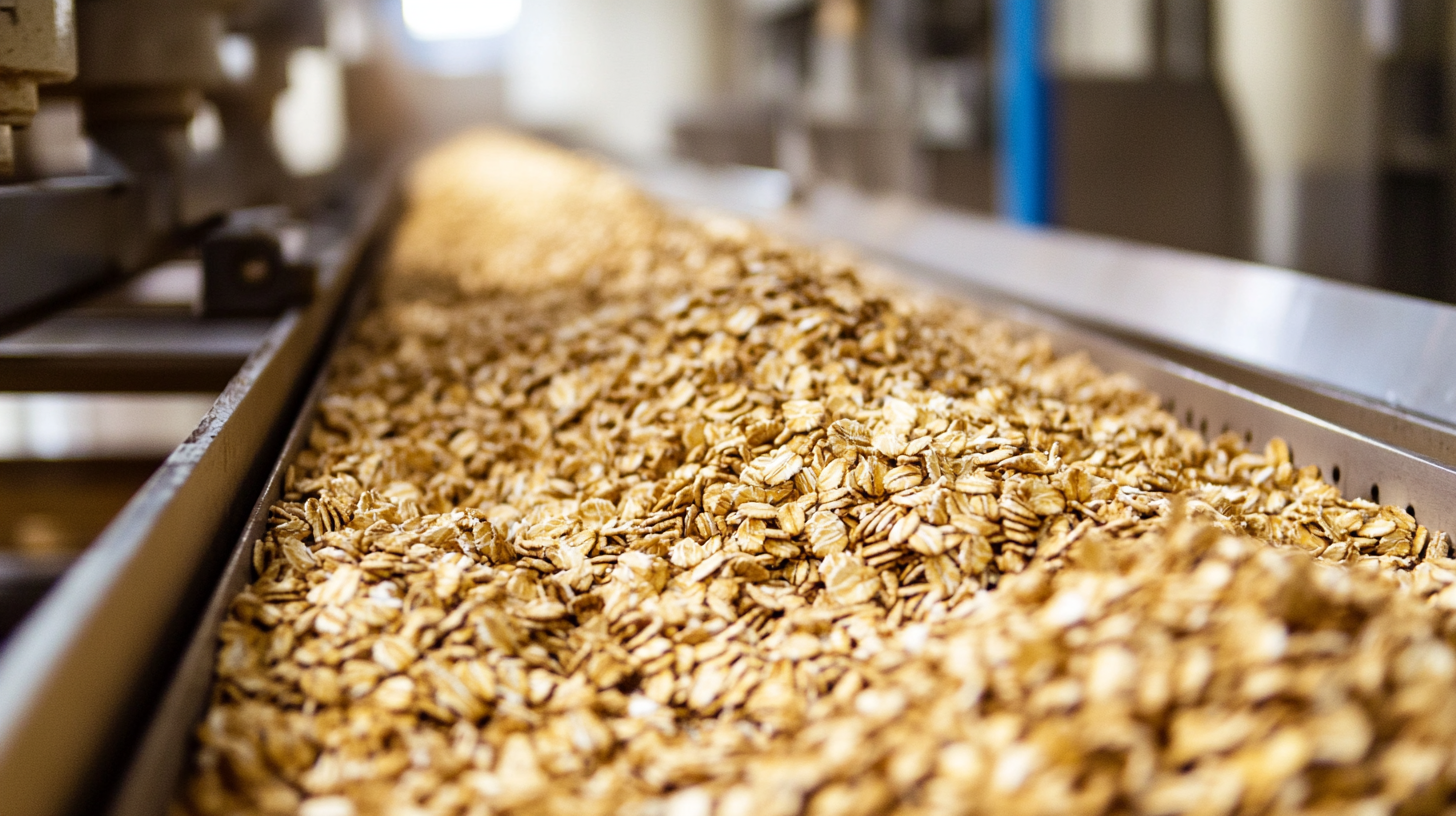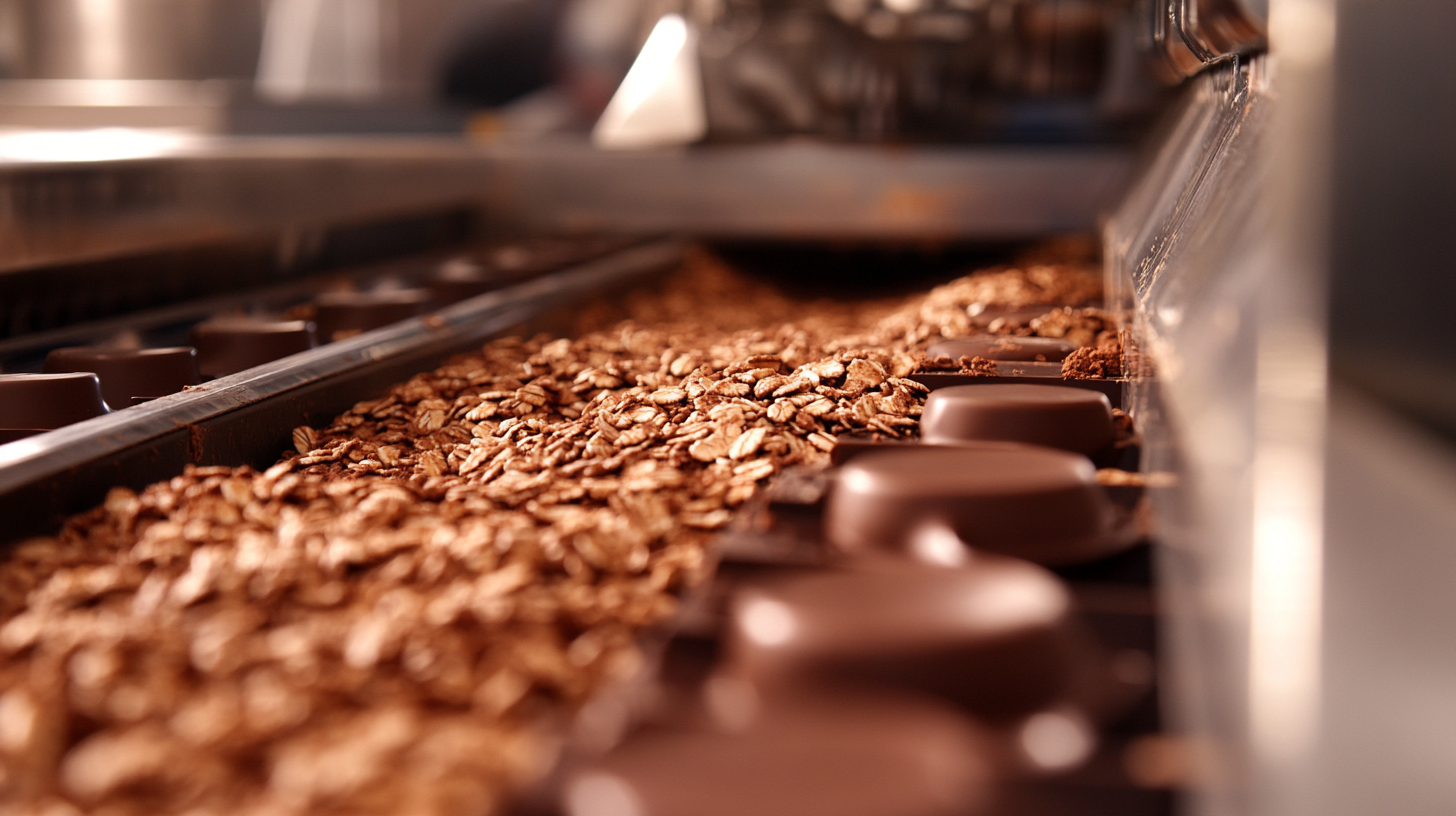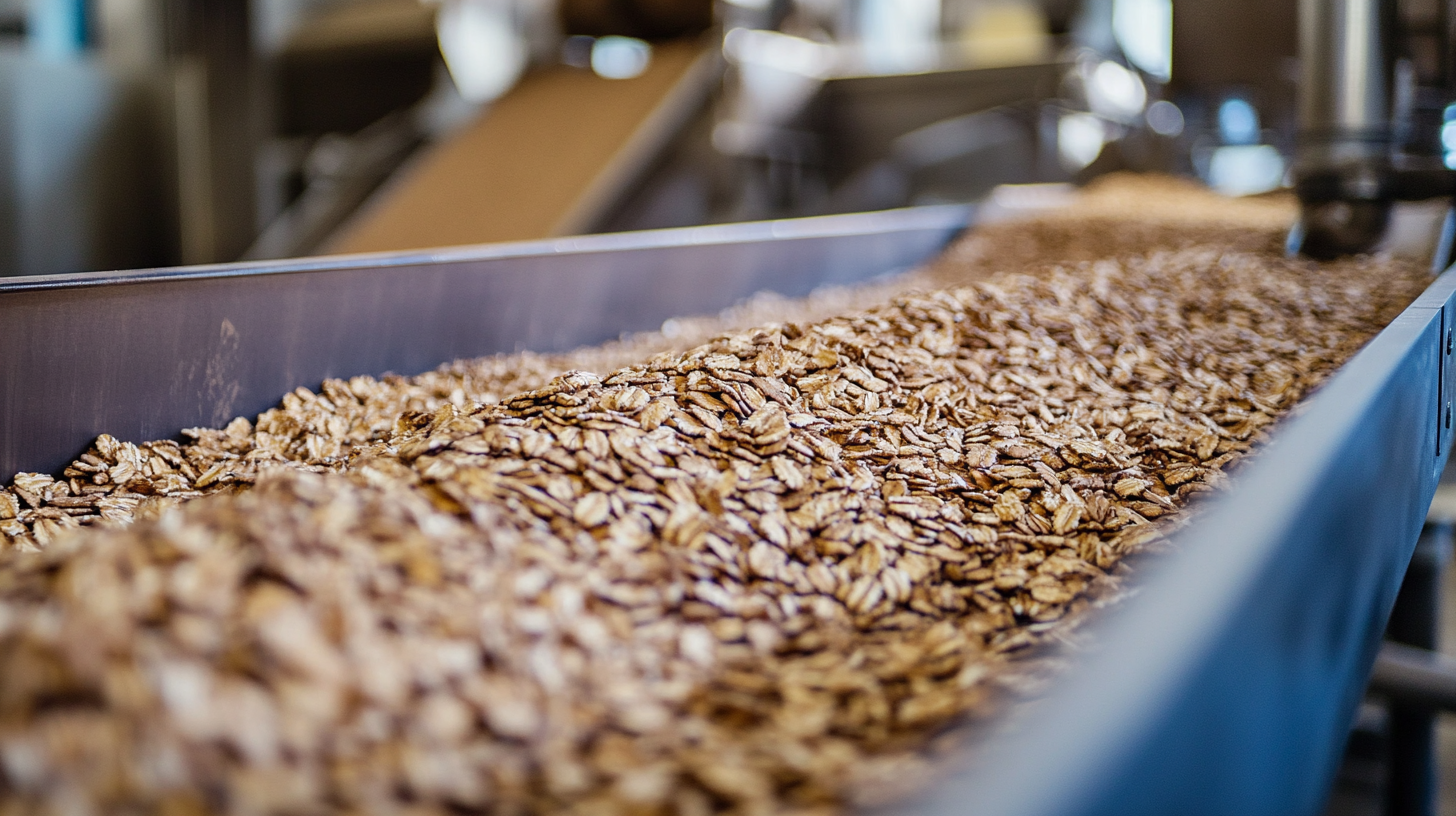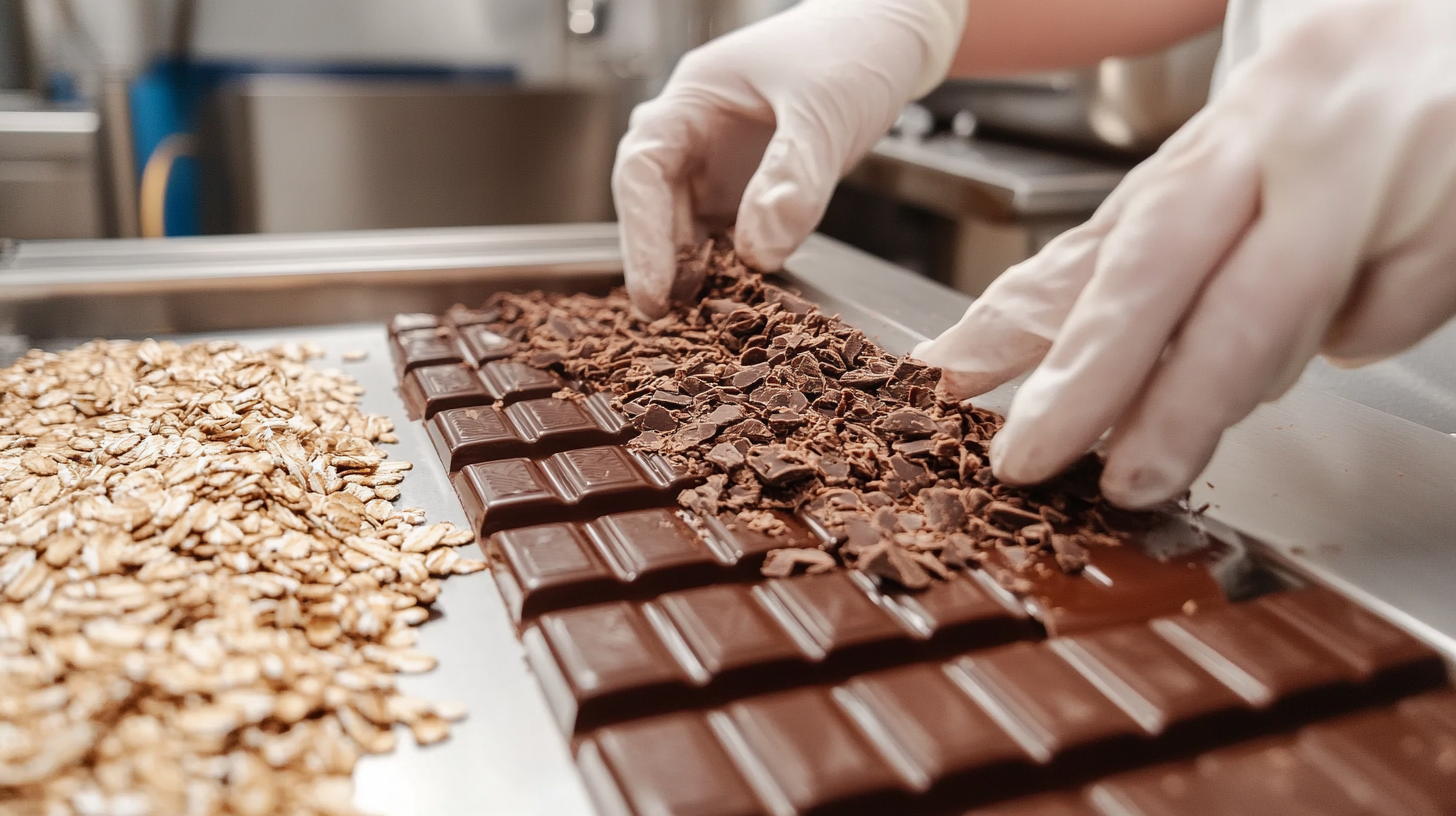7 Essential Insights for Sourcing Oatmeal Chocolate Moulding Machines Worldwide
In the rapidly evolving confectionery industry, the demand for innovative machinery is paramount, especially for the production of unique products like oatmeal chocolate. Oatmeal chocolate moulding machines are becoming increasingly significant as manufacturers seek to enhance efficiency while meeting consumer preferences for healthier indulgences. According to a recent industry report by Mordor Intelligence, the global chocolate market is expected to reach approximately $300 billion by 2024, with an annual growth rate of about 4.6%. This growth is driving a surge in investment in high-quality moulding machines that ensure the intricate processes of blending oatmeal with chocolate are seamless and precise.
As brands strive to differentiate their offerings in a crowded marketplace, the role of advanced machinery cannot be overstated. Efficient and state-of-the-art oatmeal chocolate moulding machines not only improve production capabilities but also help in achieving consistent quality, which is crucial in maintaining customer loyalty. A survey conducted by Statista revealed that 52% of consumers are increasingly opting for products that combine traditional flavors with modern twists, such as chocolate-infused oatmeal snacks. This trend underscores the importance of aligning sourcing strategies for moulding machines with the shifting preferences of consumers, ensuring businesses are well-equipped to meet the future demands of the industry.

Understanding the Different Types of Oatmeal Chocolate Moulding Machines Available Globally
When sourcing oatmeal chocolate moulding machines globally, it's essential to understand the various types available in the market. Different machines are designed to cater to specific production needs, ensuring that manufacturers can create chocolates with varied textures and flavors. For instance, the crystalline structure of chocolate is significantly influenced by the moulding process, impacting the final product’s taste and appearance. With advances in technology, manufacturers are increasingly able to leverage innovations in mould design that enhance the quality of chocolate produced. Recent developments in the chocolate industry highlight the importance of robust molding solutions. While there are exciting new lines being introduced that utilize premium ingredients, quality control remains a critical focus. Reports of product recalls due to quality issues have underscored the need for reliable machinery that can maintain high standards throughout the production process. As companies explore new opportunities in chocolate manufacturing, understanding the variety of oatmeal chocolate moulding machines becomes more relevant than ever. Furthermore, engineering advancements such as 3D printing are beginning to revolutionize the way chocolate molds are created. This allows for customization in design, enabling chocolatiers to experiment with unique shapes that can enhance their product offerings. By staying informed about different moulding technologies, manufacturers can differentiate their products in a competitive market, ultimately delivering better chocolates that meet consumer expectations.

Key Features to Look for When Sourcing Oatmeal Chocolate Moulding Machines
When sourcing oatmeal chocolate moulding machines, it is crucial to understand the key features that can significantly influence production efficiency and product quality. Recent industry reports indicate that the global confectionery machinery market is projected to grow at a CAGR of 5.2% from 2021 to 2026, which highlights the increasing demand for high-quality manufacturing equipment. One essential feature to consider is the machine's production capacity. Machines that can handle larger volumes help meet the growing consumer demand for oatmeal chocolate products, which have seen a rise in popularity due to health trends favoring oat-based snacks.
Another critical aspect is the technology used in the moulding process. Advanced machines equipped with programmable logic controllers (PLCs) allow for precise temperature control and timing, resulting in superior product consistency. According to a report by Grand View Research, automation in food processing machinery is becoming increasingly important, with 48% of manufacturers citing improved efficiency as a primary driver for investment in new technology. Additionally, flexibility in mould design is vital; machines that offer interchangeable moulds accommodate a variety of product shapes and sizes, allowing for greater market adaptability.
Quality control features, including real-time monitoring systems, are also paramount in modern moulding machines. These technologies help manufacturers ensure that each batch meets defined quality standards, reducing waste and enhancing customer satisfaction. Industry data suggests that companies with integrated quality management systems see up to a 15% increase in overall productivity. By prioritizing these key features when sourcing oatmeal chocolate moulding machines, manufacturers can position themselves for success in a competitive market.

Evaluating Manufacturers: How to Choose the Right Supplier for Your Needs
So, when you're looking at manufacturers for those oatmeal chocolate moulding machines, you gotta think about more than just how good and efficient the machines are, right? You also need to get a grip on the global supply chain game. Lately, there have been some big shifts in tariffs and trade policies that have really made businesses rethink where they source their stuff. Take high tariffs on Chinese products, for example. They’ve actually made it a bit less appealing for big companies to move their sourcing to Southeast Asia, which a bunch of industry reports have pointed out. That really highlights how important it is to stay flexible when choosing suppliers. You want to evaluate manufacturers not just on their machines but also on how well they can roll with these changing situations.
When you're trying to nail down the right supplier, it’s super important to pick those who show they’re not just financially sound, but also open about what they do. A good manufacturing partner should hit all the product specs you need while also sticking to sustainability and ethical production practices. You know, studies have shown that companies that really dive deep into managing their suppliers can lower risks in their supply chains a whole lot. So, by checking out potential suppliers through the lens of environmental, social, and governance (ESG) criteria, you can protect your interests while also doing your part for a greener supply chain.
Oh, and let's not forget about tech! Stuff like AI is a game changer when it comes to looking at and managing suppliers. With data analytics, companies can get way better insights into how their suppliers are performing, cut down on lead times, and make their overall supply chain tougher and more reliable. The ability to adjust quickly to market changes and dodge risks is key for any biz in today’s tricky environment—especially when you’re sourcing important equipment like those oatmeal chocolate moulding machines.

Navigating International Regulations and Standards for Food Machinery
When sourcing oatmeal chocolate moulding machines on a global scale, understanding international regulations and standards for food machinery is crucial. Different countries have their own compliance requirements, emphasizing safety, hygiene, and operational efficiency. Therefore, manufacturers must navigate these standards to ensure that their equipment not only meets local regulations but also aligns with international expectations. This kind of diligence helps in minimizing risks associated with non-compliance, which can lead to heavy fines and disruptions in the supply chain.
Recent trends, such as automation in the manufacturing process, further complicate this landscape. Innovations like Automated Guided Vehicles (AGVs) are becoming increasingly prevalent in food production settings. As seen in discussions held at industry seminars, these technologies raise new regulatory considerations, particularly regarding their integration into existing systems. Thus, it’s essential for businesses involved in sourcing to stay informed about both technological advancements and the evolving regulatory framework governing food machinery. By doing so, they can ensure that their operations remain competitive and compliant in a fast-paced global market.
Cost Factors: Budgeting for Your Oatmeal Chocolate Moulding Machine Investment
So, when you're thinking about investing in oatmeal chocolate molding machines, it's super important to get a good grip on the cost factors that come into play for your budget. I've seen some recent industry reports that show prices for this equipment can really vary—like, a lot—depending on things like specs, capabilities, and the kind of manufacturing tech used. Generally speaking, if you're in the market for one of these machines, you should brace yourself for budgets that could fall anywhere between $50,000 to $500,000. The machine’s output capacity and how automated it is can make a big difference in price.
Now, considering how the global economy is shifting all the time, there are a bunch of factors, like supply chain hiccups from the pandemic, that are putting pressure on manufacturing costs. I’ve heard from the National Development and Reform Commission that the government is changing its spending priorities, and that could really shake up equipment pricing down the line. With all these major infrastructure investments in the works, there’s a good chance that money is going to flow into manufacturing capabilities, which might help stabilize costs or even push them up over time.
Plus, as businesses start to rethink their financial strategies, it’s crucial to keep an eye on the changes in tariffs and taxes. Given the recent chatter about investment cutbacks and a stronger focus on being financially savvy, companies might have to tweak their budgets. There’s been some buzz about increased scrutiny on corporate spending too. So, if you want to navigate this ever-changing landscape smoothly, doing your homework on the market and budgeting proactively is really the way to go.